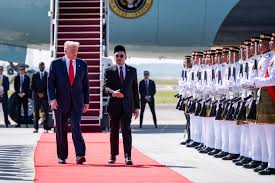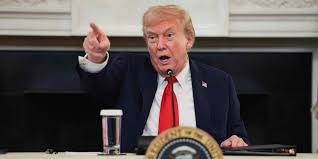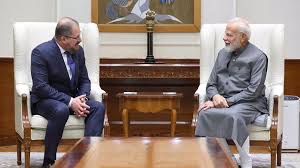Opening context: Asia tour, regional tensions and strategic framing
Donald Trump has begun the first major trip to Asia of his second term, arriving in Malaysia for the 47th ASEAN summit in Kuala Lumpur.
The backdrop is one of growing US-China tensions over trade, tariffs, and access to critical minerals (particularly rare earths), as well as US efforts to reassert its economic and strategic role in Southeast Asia.
Against this, the US is simultaneously using economic, trade, and diplomatic levers – including pursuing trade deals and linking them to geopolitical outcomes such as the peaceful resolution of conflicts. For example, Trump has made clear that trade access may depend on stability and peace in the region.
Major peace agreement: Thailand–Cambodia ceasefire
One of the highlights of the trip: Thailand and Cambodia signed an expanded ceasefire agreement in Trump’s presence.
The deal addresses the border conflict between Thailand and Cambodia that began in late July with artillery exchanges, displacement and casualties.
Under contract:
- Both sides are committed to removing heavy weapons from the disputed border area.
- Thailand will release some Cambodian prisoners (18 at one report) as part of goodwill moves.
- An ASEAN observer team will be deployed to monitor compliance.
- Trump explicitly tied the deal to the promise of trade access: in his words, “The United States will have stronger commerce and cooperation… as long as they live in peace.”
- Trump hailed the agreement as a major diplomatic achievement, noting “we just did the deal” and that many had said it couldn’t be done.
The symbolism is large: by tying trade and peace, the U.S. is signaling that regional stability is now part of its economic-diplomatic calculus.
Trade deals: Cambodia, Malaysia and minerals pact with Thailand
Cambodia
Alongside the peace accord, the U.S. announced a major trade deal with Cambodia. Trump described it as “a major trade deal with Cambodia”.
Specifics (from reporting): Cambodia agreed to reduce tariffs and open its markets; in return, the U.S. commits to expanded access and commercial cooperation
One report said Cambodia committed to purchasing 10 Boeing 737 MAX aircraft — signalling not just tariff reductions but major commercial purchases.
Malaysia
The U.S. also signed a trade agreement with Malaysia, together with a critical-minerals pact.
According to reporting, Malaysia will “modify its tariffs and non-tariff barriers”, and a focus will be agriculture, services, technology hardware (including semiconductors).
The critical minerals link is particularly strategic: as China tightens export controls on rare earths and related minerals, the U.S. is forging alternative supply chains with regional partners.
Thailand: Minerals agreement
The deal with Thailand is less a conventional trade agreement and more a “critical minerals agreement” — focused on co-operation in minerals (including rare earths) that are essential for high-tech manufacturing, defence and clean-energy technologies.
Trump emphasised that the minerals pact is “very important” and linked it to maintaining peace across the Thai-Cambodian border.
Tariff reductions & trade linkages
According to reporting, tariff rates for these countries may be reduced from as high as ~49% down to around ~19%.
The message: trade benefits will follow political and diplomatic behaviour. For example, the cease-fire deal between Thailand & Cambodia was explicitly tied to keeping trade talks on track.
Strategic implications
For the U.S.
- By forging these deals, the U.S. bolsters its influence in Southeast Asia, countering Chinese economic dominance and expanding supply-chain alliances.
- The critical minerals dimension is especially important: securing alternative sources outside China is a strategic priority.
- Linking trade access to peace and stability is a novel diplomatic lever: essentially saying trade can be a reward for responsible behaviour and risk for instability.
- These moves bolster Trump’s global-leadership narrative: the peace deal, combined with trade deals, serve his projection of being a major world actor. Indeed, he is being positioned (and positioning himself) as a peacemaker.
For Southeast Asia (Cambodia, Thailand, Malaysia)
- Cambodia: Access to the U.S. market and aerospace purchases are significant. The trade deal may open up economic opportunities.
- Malaysia: The technology hardware, semiconductors, and service-sector access angle could help Malaysia shift up the value chain.
- Thailand: The minerals agreement may give Thailand a new role in the global supply chain of critical raw materials; the peace deal may stabilise the border region and improve investor confidence.
- For all: The tariff reductions may boost exports to the U.S., but also raise obligations in terms of policy alignment and regional behaviour.
For China
- These agreements signal that the U.S. is actively building alternatives to China-centric supply chains—particularly in critical minerals.
- China may view the trade agreements as a strategic challenge to its regional influence in Southeast Asia and its dominance in the rare-earths market.
Risks & questions
- Implementation: Trade deals and minerals pacts are easy to announce; harder to execute. Will these commitments translate into actual purchases, supply chains, infrastructure?
- Enforcement & monitoring: The Thailand-Cambodia peace deal depends on monitoring heavy-weapon withdrawal and land-mine clearance — regionally complex.
- China’s response: Will Beijing retaliate via tariffs, mineral export controls, or diplomatic pressure on ASEAN nations?
- Domestic politics: The U.S. trade agenda under Trump remains volatile (tariffs on Canada, for example, concurrent with these deals).
- Economic fairness and standards: Reduced tariffs can help, but if partner countries retain significant non-tariff barriers or fail to protect labour/environment standards, tensions may arise.
Summary & Outlook
In sum: On his Asia trip, Donald Trump has leveraged diplomacy, peace-mediation and trade strategy simultaneously. The announcements include:
- A peace and cease-fire accord between Thailand and Cambodia — with U.S. mediation and trade-linked enforcement.
- A major trade deal with Cambodia.
- A trade agreement and critical minerals pact with Malaysia.
- A minerals agreement with Thailand, linked to peace and regional stability.
- Tariff reductions and a broader message that U.S. trade is contingent on regional order and alternative supply-chain partnerships.
Looking forward: Key things to watch will be implementation (are commitments honoured?), China’s reaction, regional response among ASEAN members, and how this fits into the wider U.S. trade strategy (especially vis-à-vis China and global supply chains). For Southeast Asia, the deals offer potentially significant economic and strategic opportunities — but also raise new dependencies and expectations.
These developments may mark a shift in how trade diplomacy is conducted: not just purely economic, but tightly woven into geopolitics and supply-chain strategy. If successful, the U.S. may strengthen its hand in Southeast Asia; if the deals falter or are seen as transactional without substance, regional partners may question the value.













